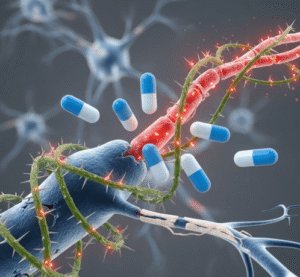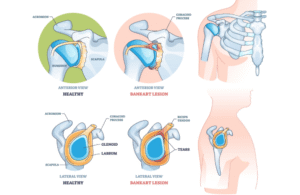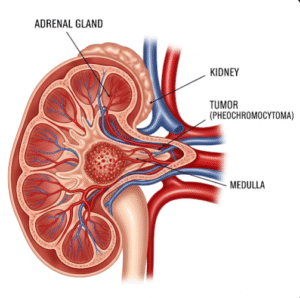Overview
Symptomatic tachycardia refers to an abnormally fast heart rate accompanied by noticeable symptoms such as palpitations, dizziness, or shortness of breath. It can be a sign of various underlying conditions, ranging from benign to life-threatening. In Korea, patients benefit from high-standard cardiology care, including rapid diagnosis, advanced electrophysiological studies, and effective treatment through medication, catheter ablation, or implantable devices.
What is Symptomatic Tachycardia?
Tachycardia is defined as a heart rate exceeding 100 beats per minute (bpm). When this elevated rate produces symptoms or discomfort, it is referred to as symptomatic tachycardia. It can originate from the atria (supraventricular tachycardia) or the ventricles (ventricular tachycardia).
There are different types:
- Sinus tachycardia – Usually due to stress, fever, or dehydration.
- Supraventricular tachycardia (SVT) – Includes AVNRT, AVRT, atrial tachycardia.
- Atrial fibrillation/flutter
- Ventricular tachycardia (VT) – Often seen in structural heart disease and potentially fatal.
- Postural orthostatic tachycardia syndrome (POTS) – Common in young individuals, especially women.
Symptoms
Symptoms may vary depending on the heart rate, type of tachycardia, and underlying cause, but common signs include:
- Palpitations (racing or fluttering heartbeat)
- Dizziness or lightheadedness
- Shortness of breath
- Chest pain or discomfort
- Fatigue
- Anxiety
- Fainting (syncope) – in severe cases
Causes
Symptomatic tachycardia can be caused by numerous factors:
- Stress, anxiety, or panic attacks
- Fever or infection
- Electrolyte imbalances
- Hyperthyroidism
- Anemia
- Dehydration
- Heart diseases (e.g., coronary artery disease, heart failure, valve disorders)
- Drug or caffeine use
- Congenital electrical conduction disorders
Risk Factors
- Existing heart disease
- Previous heart attack
- Congenital heart abnormalities
- Excess alcohol, tobacco, or stimulant use
- Over-the-counter decongestants or diet pills
- Family history of arrhythmias
- Obstructive sleep apnea
- Hyperthyroidism
Complications
If left untreated, symptomatic tachycardia can lead to:
- Heart failure
- Blood clots and stroke (especially in atrial fibrillation)
- Sudden cardiac arrest
- Syncope-related injury
- Reduced quality of life due to frequent symptoms
- Progressive cardiomyopathy (tachycardia-induced)
Prevention
Preventing symptomatic tachycardia involves managing triggers and underlying health conditions:
- Limit caffeine, alcohol, and stimulants
- Manage stress and anxiety
- Regular check-ups for thyroid, heart, and metabolic conditions
- Stay hydrated and avoid overheating
- Treat underlying cardiac issues promptly
- Medication review with a doctor to avoid drug-induced tachycardia
Treatment Options in Korea
Korean hospitals provide comprehensive care for tachycardia, using both conservative and advanced interventional therapies tailored to the individual patient’s needs.
1. Diagnosis
- Electrocardiogram (ECG) – primary diagnostic tool
- Holter monitoring – 24–72 hours ECG recording
- Echocardiogram – to assess heart structure
- Electrophysiological studies (EPS) – to map electrical activity
- Blood tests – including thyroid function, electrolytes, and cardiac enzymes
- Tilt table test – for POTS or neurocardiogenic syncope
2. Medication
- Beta-blockers (e.g., bisoprolol, metoprolol)
- Calcium channel blockers (e.g., verapamil, diltiazem)
- Antiarrhythmic drugs (e.g., flecainide, amiodarone)
- Anticoagulants – in atrial fibrillation to prevent stroke
- IV medications – for emergency heart rate control
3. Catheter Ablation
- A minimally invasive procedure where targeted heat or cold energy destroys small areas of heart tissue causing abnormal rhythms.
- Highly effective in:
- SVT
- Atrial flutter
- Some types of ventricular tachycardia
- Performed in leading electrophysiology labs across Korea
4. Cardioversion
- Electrical cardioversion used to reset rhythm in atrial fibrillation or flutter
- Often performed under sedation with monitoring
5. Implantable Devices
- Pacemakers – for bradycardia following treatment of tachy-brady syndrome
- Implantable Cardioverter Defibrillators (ICD) – for ventricular tachycardia/fibrillation prevention
- Available in major tertiary hospitals in Korea with long-term follow-up programs
6. Lifestyle & Supportive Care
- Counseling for anxiety-related tachycardia
- Physical therapy and exercise programs (especially in POTS)
- Dietary support
- Patient education for monitoring and emergency response












